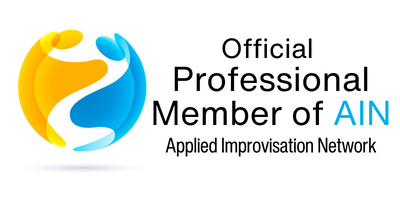Title: Building Better Dialogue: How Improv Skills Can Improve Your Fiction Writing
In the ever-evolving realm of fiction writing, authors often search for techniques to enhance their storytelling. One such technique, taken from the world of theatre, offers a fresh approach to crafting compelling dialogue: improvisation. Leveraging improv skills can transform static conversations into dynamic interactions, breathe life into characters, and make exchanges between them feel genuine and spontaneous.
The Art of Improv in Writing
Improvisation, often associated with spontaneous theatre performances, involves unscripted and instinctual verbal exchanges. Although it might seem unrelated to the methodical process of writing, improv focuses on key elements that can enrich fictional dialogue. These elements include active listening, spontaneity, embracing mistakes, and a foundational principle known as "Yes, And."
-
Active Listening: In improv, performers must listen attentively to respond effectively to their scene partners. Similarly, writers can enhance their dialogue by internalizing their characters’ voices and allowing them to naturally and authentically respond to each other. An article from Writer’s Digest underscores the importance of listening in writing, noting that active listening helps writers explore different perspectives and develop more nuanced characters.
-
Spontaneity: Improvisation thrives on spontaneity, encouraging performers to create in-the-moment. For fiction writers, embracing spontaneous dialogue can lead to unexpected character revelations and plot developments. It’s about allowing characters to take the lead, as suggested by writers on The Write Practice, which emphasizes trusting your characters to guide their own stories.
-
Embracing Mistakes: Improv encourages performers to view mistakes as opportunities rather than failures. In fiction writing, this perspective can help authors experiment with dialogue without the fear of getting it wrong. This process can add authenticity and depth, mirroring the imperfections found in real conversations. The blog at NY Writers Coalition praises the courage to experiment and how it can lead to profound storytelling moments.
- "Yes, And" Principle: This cornerstone of improv requires participants to accept what another performer has proposed ("Yes") and then expand upon it ("And"). This concept can shift a writer’s approach to dialogue, fostering fluidity and connection between characters. Writers can build richer narrative worlds by continuously accepting and expanding on character interactions, as discussed in articles by ScreenCraft, which provides insights into applying improv principles to screenwriting and beyond.
Applying Improv Techniques to Fiction
Translating improv skills to fiction writing might seem challenging, but there are practical exercises to bridge this gap.
-
Improv Writing Sessions: Try writing dialogue as an improv session. Give your characters a scenario and let them converse without scripting their lines beforehand. This exercise can loosen your grip on control, offering new insights into your characters’ personalities and relationships.
-
Character Interviews: Conduct interviews with your characters, allowing them to answer spontaneously. This practice can illuminate details about their motivations and backstories, adding layers to their dialogue in your narrative.
- Dialogue Workshops: Collaborate with fellow writers in an improv-style workshop focused on dialogue. Exchange roles, write response lines on the spot, and experiment with different scenarios to see how characters evolve through interaction.
Conclusion
By incorporating improv skills into fiction writing, authors open the door to more authentic, engaging, and unpredictable dialogue. This fusion of disciplines not only enriches characters but also enhances the reader’s experience, drawing them deeper into the world of the story. As the creative boundaries between media continue to blur, improvisation offers a refreshing toolkit for writers eager to breathe new life into their fiction.
For more insights into how improv can influence writing, refer to Improv Beyond for workshops and resources on applying theatrical techniques to narrative forms. Embrace the synergy between improv and writing to craft dialogues that resonate and captivate.


